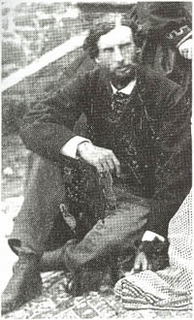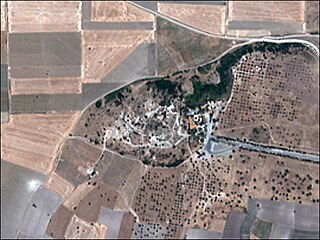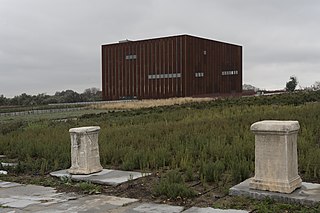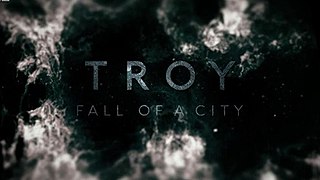 W
WTroy was a city in the northwest of Asia Minor, southwest of the Çanakkale Strait, south of the mouth of the Dardanelles and northwest of Mount Ida. The location in the present day is the hill of Hisarlik and its immediate vicinity. In modern scholarly nomenclature, the Ridge of Troy borders the Plain of Troy, flat agricultural land, which conducts the lower Scamander River to the strait. Troy was the setting of the Trojan War described in the Greek Epic Cycle, in particular in the Iliad, one of the two epic poems attributed to Homer. Metrical evidence from the Iliad and the Odyssey suggests that the name Ἴλιον (Ilion) formerly began with a digamma: Ϝίλιον (Wilion); this is also supported by the Hittite name for what is thought to be the same city, Wilusa. According to archaeologist Manfred Korfmann, Troy's location near the Aegean Sea, as well as the Sea of Marmara and the Black Sea, made it a hub for military activities and trade, and the chief site of a culture that Korfmann calls the "Maritime Troja Culture", which extended over the region between these seas.
 W
WFrank Calvert (1828–1908) was an English expatriate who was a consular official in the eastern Mediterranean region and an amateur archaeologist. He began exploratory excavations on the mound at Hisarlik, seven years before the arrival of Heinrich Schliemann.
 W
WHisarlik, often spelled Hissarlik, is the Turkish name for an ancient city located in what is known historically as Anatolia, Turkish anadolu. It is part of Çanakkale, Turkey. The archaeological site lies approximately 6.5 kilometres (4.0 mi) from the Aegean Sea and about the same distance from the Dardanelles. The site is a partial tell, or artificial hill, elevated in layers over an original site. In this case the original site was already elevated, being the west end of a ridge projecting in an east–west direction from a mountain range.
 W
WPriam's Treasure is a cache of gold and other artifacts discovered by classical archaeologist Heinrich Schliemann at Hissarlik in modern Turkey. The majority of the artifacts are currently in the Pushkin Museum in Moscow.
 W
WHeinrich Schliemann was a German businessman and a pioneer in the field of archaeology. He was an advocate of the historicity of places mentioned in the works of Homer and an archaeological excavator of Hisarlik, now presumed to be the site of Troy, along with the Mycenaean sites Mycenae and Tiryns. His work lent weight to the idea that Homer's Iliad reflects historical events. Schliemann's excavation of nine levels of archaeological remains with dynamite has been criticized as destructive of significant historical artifacts, including the level that is believed to be the historical Troy.
 W
WIn Greek mythology, the Trojan War was waged against the city of Troy by the Achaeans (Greeks) after Paris of Troy took Helen from her husband Menelaus, king of Sparta. The war is one of the most important events in Greek mythology and has been narrated through many works of Greek literature, most notably Homer's Iliad. The core of the Iliad describes a period of four days and two nights in the tenth year of the decade-long siege of Troy; the Odyssey describes the journey home of Odysseus, one of the war's heroes. Other parts of the war are described in a cycle of epic poems, which have survived through fragments. Episodes from the war provided material for Greek tragedy and other works of Greek literature, and for Roman poets including Virgil and Ovid.
 W
WTroy is a 2004 epic historical war film directed by Wolfgang Petersen and written by David Benioff. Produced by units in Malta, Mexico and Britain's Shepperton Studios, the film features an ensemble cast led by Brad Pitt, Eric Bana, and Orlando Bloom. It is loosely based on Homer's Iliad in its narration of the entire story of the decade-long Trojan War—condensed into little more than a couple of weeks, rather than just the quarrel between Achilles and Agamemnon in the ninth year. Achilles leads his Myrmidons along with the rest of the Greek army invading the historical city of Troy, defended by Hector's Trojan army. The end of the film is not taken from the Iliad, but rather from Quintus Smyrnaeus's Posthomerica as the Iliad concludes with Hector's death and funeral.
 W
WThe Troy Museum is an archaeological museum located close to the archaeological site of the ancient city of Troy, in northwestern Turkey. Opened in 2018, it exhibits in seven sections of a contemporary architectural building the historical artefacts from Troy and some other ancient cities around and on nearby islands. The museum director is Ali Atmaca.
 W
WTroy VII is an archaeological layer at Hisarlik which corresponds to the city of Troy from roughly 1300 to 950 BC. It was a walled city comprising a citadel surrounded by a large lower town, described by Manfred Korfmann as "by the standards of its day a large and important city". One of its sublayers has been considered as a candidate for the city which inspired the legends of the Trojan War.
 W
WTroy: Fall of a City is a British-American miniseries based on the Trojan War and the love affair between Paris and Helen. The show tells the story of the 10-year siege of Troy, set in the 13th century BC. It is not an adaption of Homer's Iliad or Odyssey but rather an original take on the Greek myths, and covers some ground only alluded to in those works. The series was commissioned by BBC One and is a co-production between BBC One and Netflix, with BBC One airing the show on 17 February 2018 in the United Kingdom, and Netflix streaming the show internationally outside the UK.